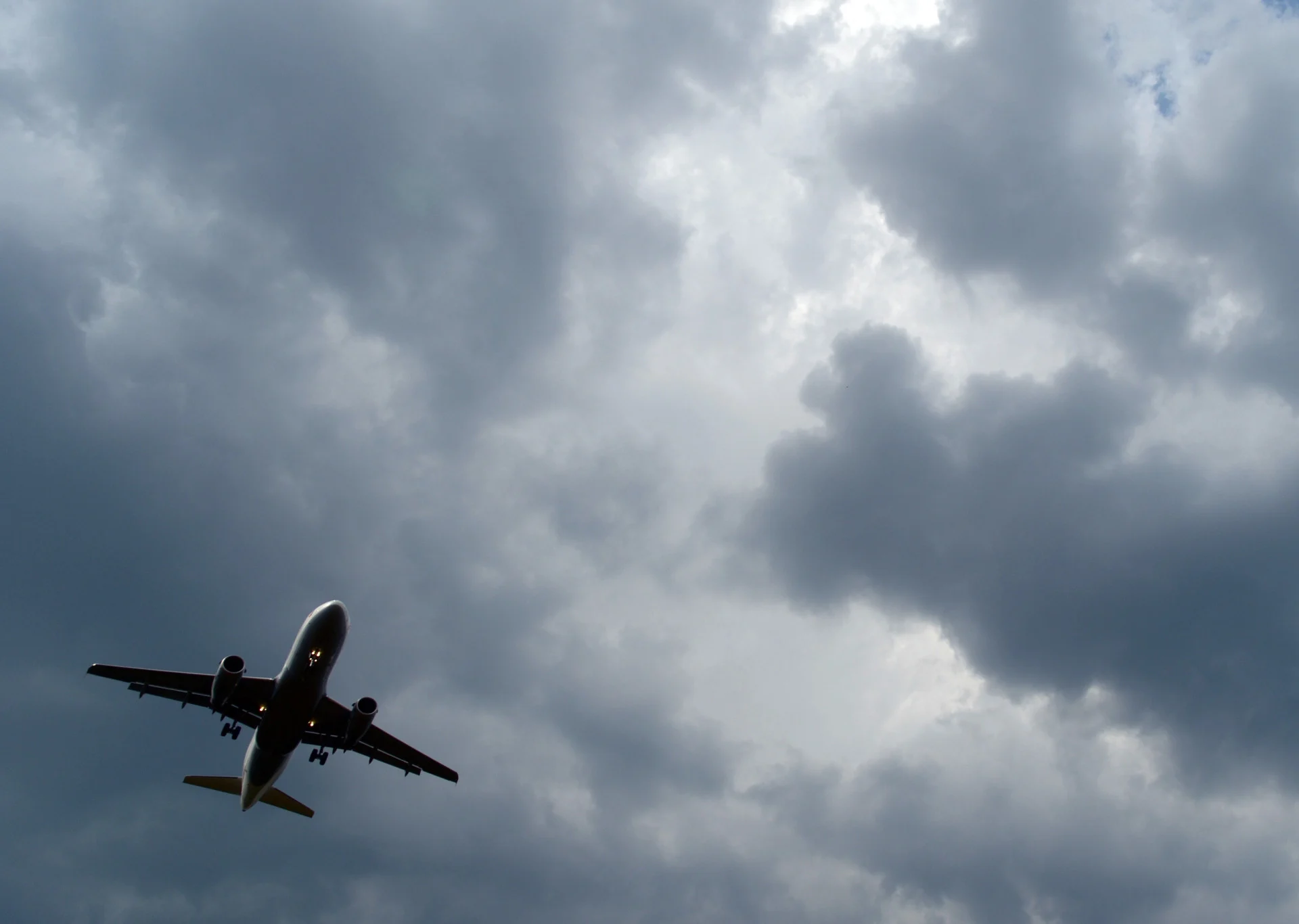
Buckle up: Severe turbulence is on the rise. Here's why
Berlin dpa via Reuters Connect
The plane suddenly feels like it's dropping out of the sky: Even for a passenger with a sturdy stomach, turbulence is at best unpleasant. Research shows this phenomenon is becoming more and more common. What causes it - and could it ever damage the plane?
You may have never encountered a case of severe turbulence during a flight, but this phenomenon is on the rise. One study projects that air travellers will face more "hazardous" turbulence in the coming years due to climate change.
Most cases of turbulence are experienced only as a mild shaking in the aircraft and a slight loss of elevation. In rarer, more severe cases, passengers and crew members can be injured, however.
Especially dangerous is what's known as "clear air turbulence" since this often occurs without any advanced warning - in other words without any chance to fasten your seat belt.
According to a 2023 study from Reading University in the UK, such turbulence has been increasing over recent decades. In 1979 clear air turbulence totalled 467 hours over the North Atlantic, while in 2020 the figure was 547 hours.
Reports of deaths due to turbulence are extremely rare, but injuries less so. Severe and sudden turbulence is not only a threat to passengers and crew, but also to the planes carrying them. "Every additional minute spent traversing turbulence causes fatigue and increases wear-and-tear on the airframe," the study authors write.
SEE ALSO: More trees aren't the solution to climate change
We asked some experts to explain air turbulence as well as some simple but important rules for passengers to follow.
What creates air turbulence?
There can be different causes, and one major one is the jet stream, says Jens Heider, an aeronautical engineer and pilot with the German aviation and space centre (DLR). "These are strong fields of wind in the upper troposphere, 8-12 kilometres high and which, depending on the region and season, can vary greatly in strength." Jet streams emerge from horizontal temperature differences in the atmosphere.
Turbulence can be created in and around thunderstorm areas with their rising warm air and sinking cold air. When possible, pilots try to fly around them.
Topography can also play a role. "Mountain chains can raise the entire air package," Heider explains. Research shows that the most turbulent air routes are located above mountains.

Bumpy terrain means a bumpy flight: Research shows that the most turbulent air routes are located above mountains. (Jan Woitas/dpa via Reuters Connect)
RELATED: Six annoying ways weather forces airlines to cancel your flight
And what is clear air turbulence?
This is turbulence that can't be seen with the naked eye, since it is located in cloud-free air. It is caused by the collision of significantly different air masses travelling at very different speeds. Heider says that in technical jargon, these are actually associated with jet streams. "But it's a question of definition."
What happens when there's an air pocket during turbulence?
It's a terrifying moment: The airplane suddenly drops. "The plane is flying in an area where all around it, the air is sinking - and so the plane also sinks," Heider notes.
Can an airplane withstand such stresses?
The wings bend and the fuselage is shaken up. You might think that an airplane could break apart in strong turbulence. But Heider is reassuring on this, saying that in view of the strict and extremely security-driven construction regulations for modern planes, it is extremely unlikely.
"According to everything we know so far about the forces that occur during turbulence, this can even be ruled out," the aeronautical engineer says.
WATCH: Spectacular moment lightning strikes plane during severe weather
Can turbulence be avoided?
The weather forecasts that pilots receive while preparing a flight, mean they know where possible turbulence can be expected. But, while thunderstorms and cloud formations with their expected strong winds can often be seen with control systems, this is not always the case with clear-air turbulence. New apps might help in this area.
How do pilots respond to turbulence?
Pilots are trained in handling turbulence, and they can at any time - even if the plane is on autopilot - intervene manually. Other cockpit crews flying the same air space can then react, and as far as possible and coordinating with air traffic control, try to fly around critical areas.
DON'T MISS: Canada's first offshore wind turbines could be coming soon
This can mean flying higher or lower, or even choosing a different route, according to the Federal Association of the German Air Transport Industry.
And what if the plane still flies into turbulence?
If pilots are expecting turbulence, they will turn on the fasten seatbelts signs. They might also ask the cabin crew to interrupt their service. "If you have flown into turbulence and people are still standing in the aisle, it is too late," Heider says.
That means that prevention is the best measure for pilots and crew to take - but also passengers. Because turbulence sometimes is heavy and comes without any warning, the general rule is except when getting up to stretch one's legs or go to the toilet, always to remain seated with the seatbelt fastened. Even when the seatbelt sign is off.
Thumbnail credit to Jan Woitas/dpa via Reuters Connect.











